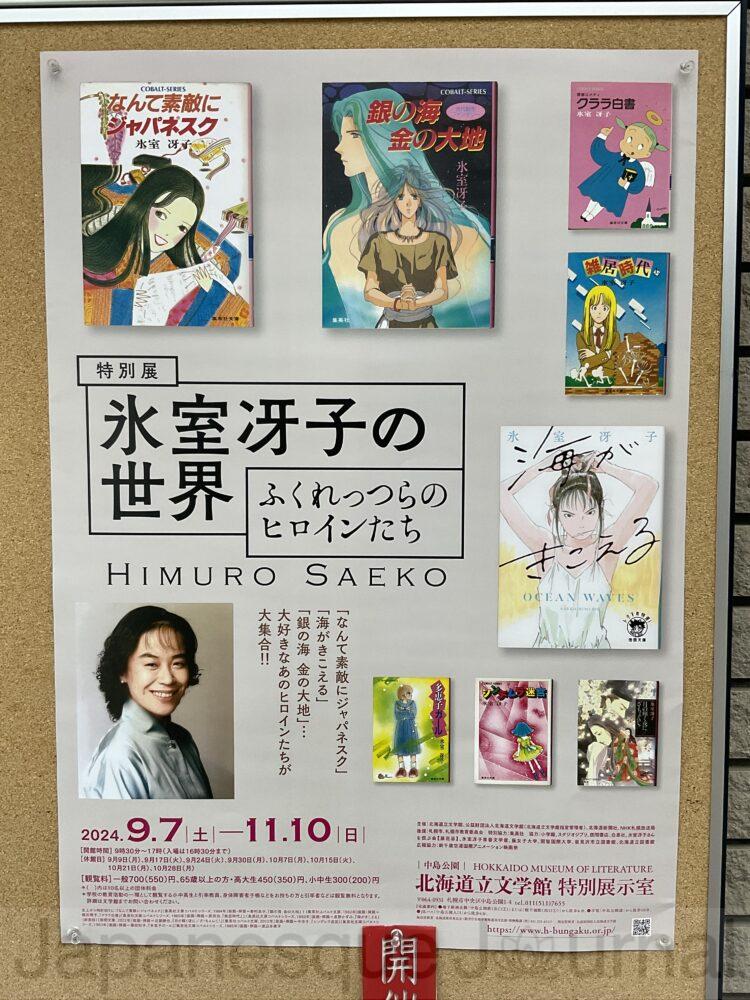If you’re a fan of Japanese literature or nostalgic for the golden era of Japanese young adult novels, “The World of Saeko Himuro: The Grumpy Heroines (氷室冴子の世界 ふくれっつらのヒロインたち)” is a must-see exhibition. Held at the Hokkaido Museum of Literature, this special event offered an intimate look into the works and life of Saeko Himuro, one of Japan’s most beloved authors.
Getting There “The World of Saeko Himuro”
The Hokkaido Museum of Literature is conveniently located near Nakajima Park subway station in Sapporo city. A short walk leads you to the museum entrance, where a large signboard featuring the covers of Himuro’s most famous works greets visitors. It was the perfect introduction, evoking waves of nostalgia for long-time fans!
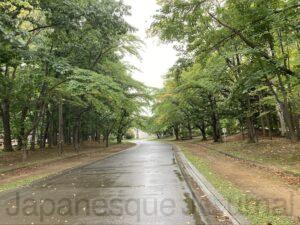
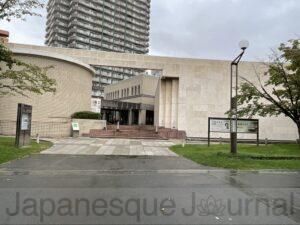
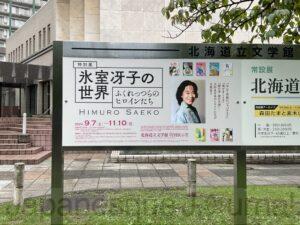
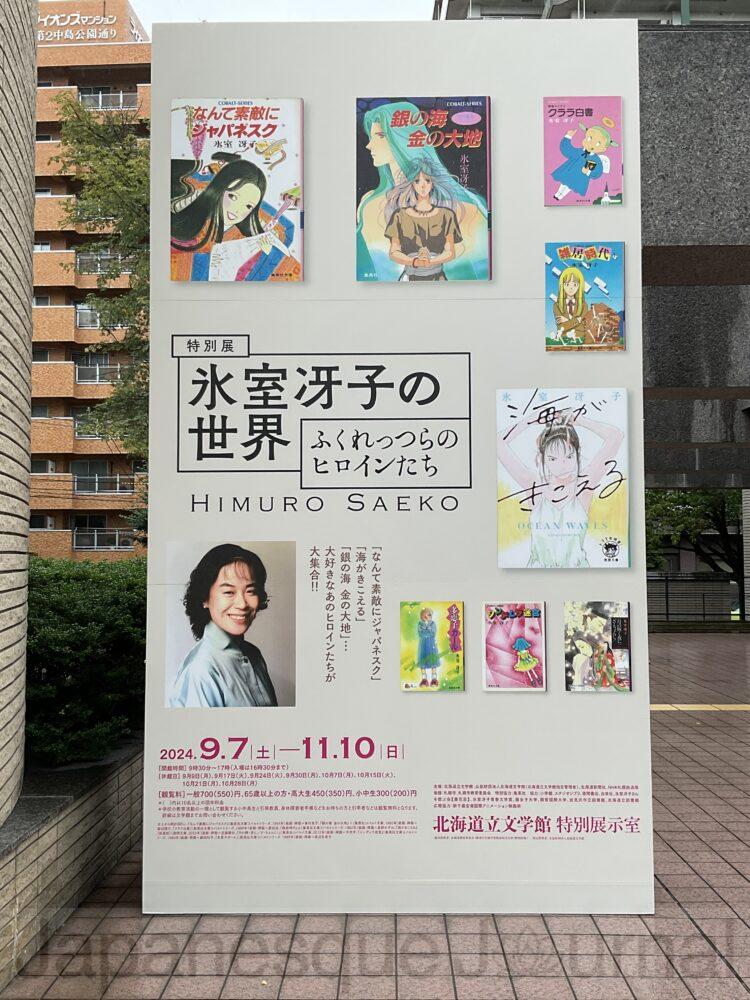
The Exhibition “The World of Saeko Himuro: The Grumpy Heroines’’
The exhibition is on the basement floor of the museum. At the entrance, visitors can take photos with an image of Saeko Himuro dressed in a jūnihitoe. It is a traditional Japanese court outfit famously worn by the heroine Ruri-hime in her novel series What a Splendid Japonesque!(なんて素敵にジャパネスク). Photography, however, is not allowed beyond this point, ensuring the preservation of the displayed artifacts.
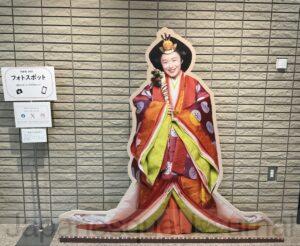
The journey begins with Saeko Himuro’s early writings from childhood. Even as a young girl, her literary talent was striking, with completed works showcasing her sophisticated writing style and hints of the distinct tone that would later define her novels.
The exhibition follows a chronological flow, with dedicated sections for each of her works. These include:
- Clara and Agnes Report series (Kurara Hakusho/Agunesu Hakusho; クララ白書・アグネス白書)
- Communal Living (Zakkyo Jidai; 雑居時代)
- The Change (ざ・ちぇんじ!)
- The Cinderella Series (シンデレラ迷宮・シンデレラミステリー)
- Ocean Waves (Umi ga Kikoeru; 海がきこえる)
- Warabi-ga-Oka Stories (蕨ヶ丘物語)
- Taeko Girl series (Nagisa Boy, Taeko Girl, Kitasato Madonna; なぎさボーイ、多恵子ガール、北里マドンナ)
- Yamato Takeru (ヤマトタケル)
- Dean in Winter and Natalie in Summer (Natsuno Dean Fuyuno Natalie; 冬のディーン夏のナタリー)
- Sister Story (Imouto Monogatari; いもうと物語)
- Saeko no Haha Ko Gusa (冴子の母娘草)
- What a Splendid Japonesque! (Nante Suteki ni Japanesque!; なんて素敵にジャパネスク)
- Silver Sea, Golden Earth (Gin no Umi, Kin no Daichi; 銀の海 金の大地)
- On a Moonlit Night (Tsuki no Kagayaku Yoru ni), her final work.
Each section featured artifacts like her handwritten manuscripts, notes from her research, and materials that inspired her stories. There were even pages from manga adaptations of her novels. Particularly noteworthy was the section dedicated to Ocean Waves, where original artworks by Katsuya Kondō, who worked on the Studio Ghibli adaptation, were on display. These pieces offered an in-depth look at the artistry behind the film.
Original Manga Illustrations of Saeko Himuro’s works
The exhibition also included original illustrations by Kazuko Fujita (藤田和子) and Naomi Yamauchi (山内直子), both of whom created manga adaptations of Himuro’s novels. Seeing Fujita’s exquisite art up close was a delight, as her work has always been a favorite of mine. Similarly, Yamauchi’s manga adaptations of Japonesque have been a source of countless rereads for fans, making it a treat to see her original drafts.
One of the most impressive aspects of the exhibition was how it paired Saeko Himuro’s handwritten manuscripts with corresponding scenes from their manga adaptations. For example, iconic moments from “What a Splendid Japonesque!” were highlighted, showcasing the passion and care of the curators in choosing these scenes.
Silver Sea, Golden Earth
While “Silver Sea, Golden Earth” section featured reproduction illustrations rather than originals, the larger format displays were still impactful. Although seeing the original artwork would have been ideal, it’s possible that logistical or preservation challenges prevented it.
One omission that stood out was the lack of illustrations by Ryoko Minemura (峯村良子), who provided the cover art for the first editions of the Japonesque novels in Cobalt Bunko format. Her illustrations hold a special place in many fans’ hearts, and their absence was felt, though perhaps contacting her might have been difficult.
Final Section and Visitor Reflections
The exhibition concluded with a collection of Saeko Himuro’s published novels and a feedback space where visitors could share their thoughts. Remarkably, this regional exhibition attracted visitors from across Japan, as well as Taiwan and South Korea. Reading their heartfelt messages reinforced the profound impact Himuro’s works have had on readers worldwide.
One comment stood out to me: “She has been my youth.” It resonated deeply, as Himuro’s novels were an essential part of my own youth, as well as the youth of countless others.
